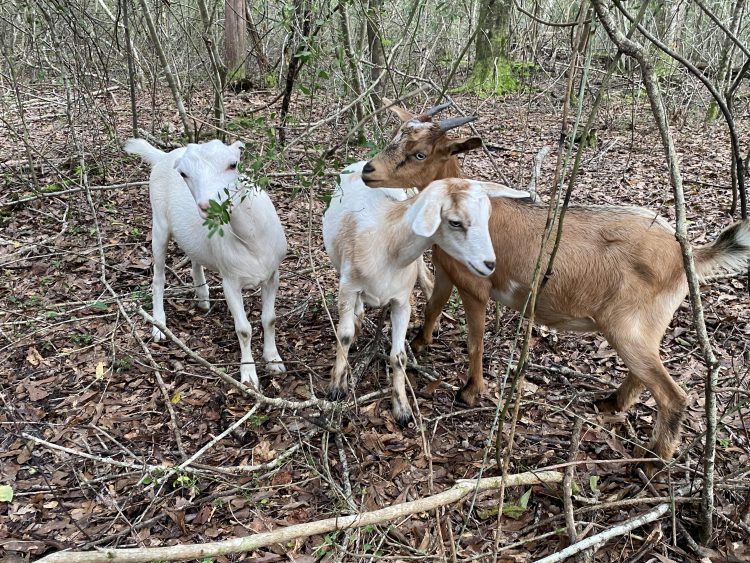Full Title: The potential for conservation grazing in coastal uplands
This project developed a research plan addressing conservation grazing, or the use of livestock as an alternative or complementary habitat management strategy, in coastal uplands of the northern Gulf.

Lead Investigator: Eric Sparks, Mississippi State University and Mississippi-Alabama Sea Grant Consortium, eric.sparks@msstate.edu
Natural Resource Manager: Jonathan Pitchford, Mississippi Department of Marine Resources and Grand Bay National Estuarine Research Reserve
Project Team: Cassy Porter and Margo Posten (Grand Bay NERR); Katie Swanson and Sarah Cunningham (Mission Aransas NERR); Eric Brunden and Michael Shelton (Weeks Bay NERR); Caitlin Synder (Apalachicola NERR); and Timothy Schauwecker (Mississippi State University)
Federal Program Officer/Point of Contact: Frank Parker (frank.parker@noaa.gov)
Award Amount: $130,200
Award Period: September 2021 – August 2023
Why it matters: The management of coastal upland habitats is difficult due to high front end costs, prolonged maintenance, and the specialized experience and training that is required. Currently, techniques such as prescribed fires, chemical treatments, and mechanical removal are used to remove invasive species and clear understory in order to restore coastal upland habitats. However, these techniques can be costly, cause ecological damage, and their effectiveness can be limited by the effects of climate change. Conservation grazing, where livestock is used for vegetation management, is a potential alternative that is less ecologically damaging and more financially viable. This project assessed the when, where, and how to implement conservation grazing into land management programs throughout the Gulf Coast.
What the team did: The project team administered a survey to natural resource managers, livestock producers, and researchers to assess research needs and potential concerns regarding the use of livestock for habitat management. The team also conducted field visits with private and public landowners across the Gulf coast. They prioritized traveling to areas where conservation grazing was already occurring or where existing conditions supported the potential use of this technique.
Summary of outcome: Survey results showed that over 96% of natural resource managers were interested in using livestock for habitat management, but there was a lack of information needed to inform grazing practices. Using information collected during the survey and at site visits, the project team developed a research and application plan to identify the potential for livestock to manage or potentially spread invasive species and the frequency and duration of livestock grazing needed to meet management goals.
Winter 2023 – Grazing on the Coast: Scientists look to the past to meet today’s land management challenges, Mississippi State University
Under New Management – Extension Matters
 Official websites use.gov
A .gov website belongs to an official government organization in the United States.
Official websites use.gov
A .gov website belongs to an official government organization in the United States.
 Secure .gov websites use HTTPS
A lock or https:// means you’ve safely connected to the .gov website. Share sensitive information only on official, secure websites.
Secure .gov websites use HTTPS
A lock or https:// means you’ve safely connected to the .gov website. Share sensitive information only on official, secure websites.